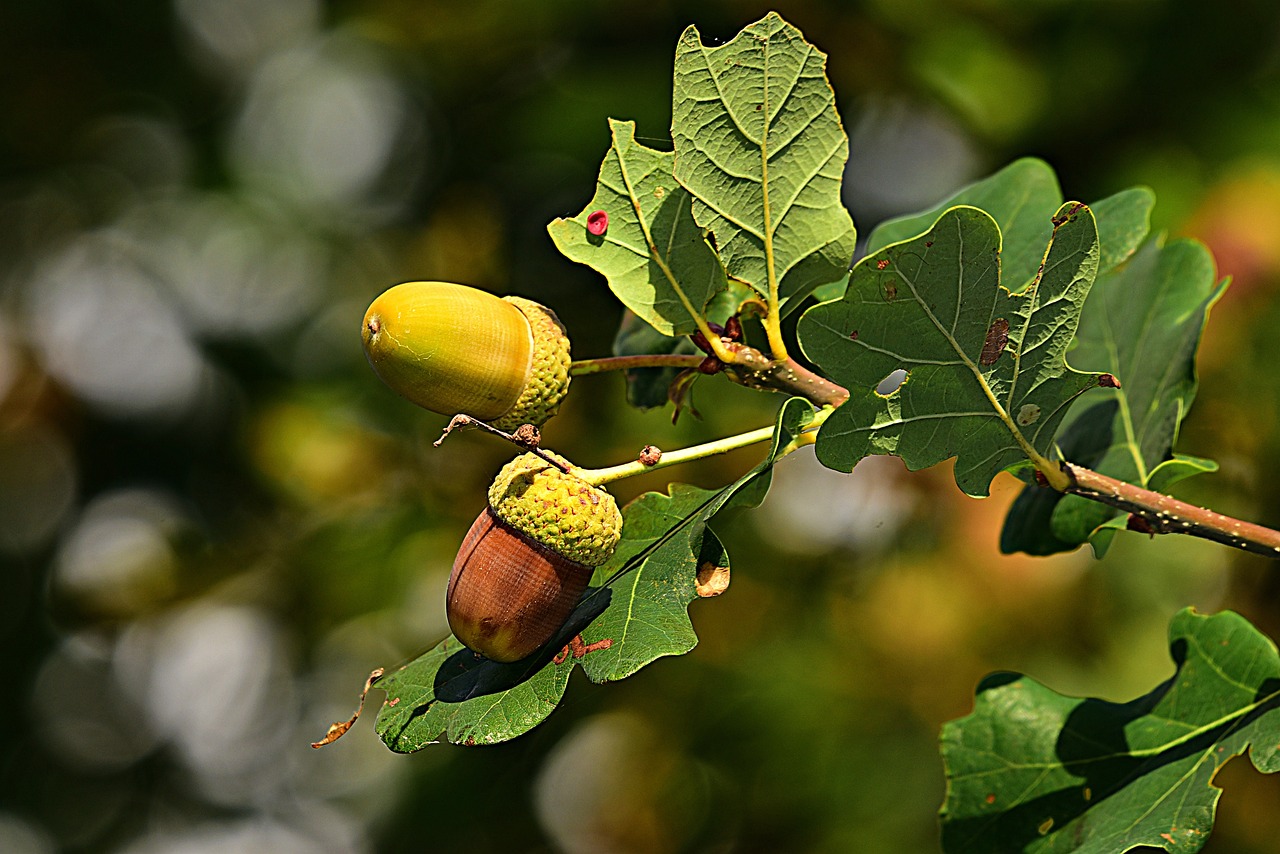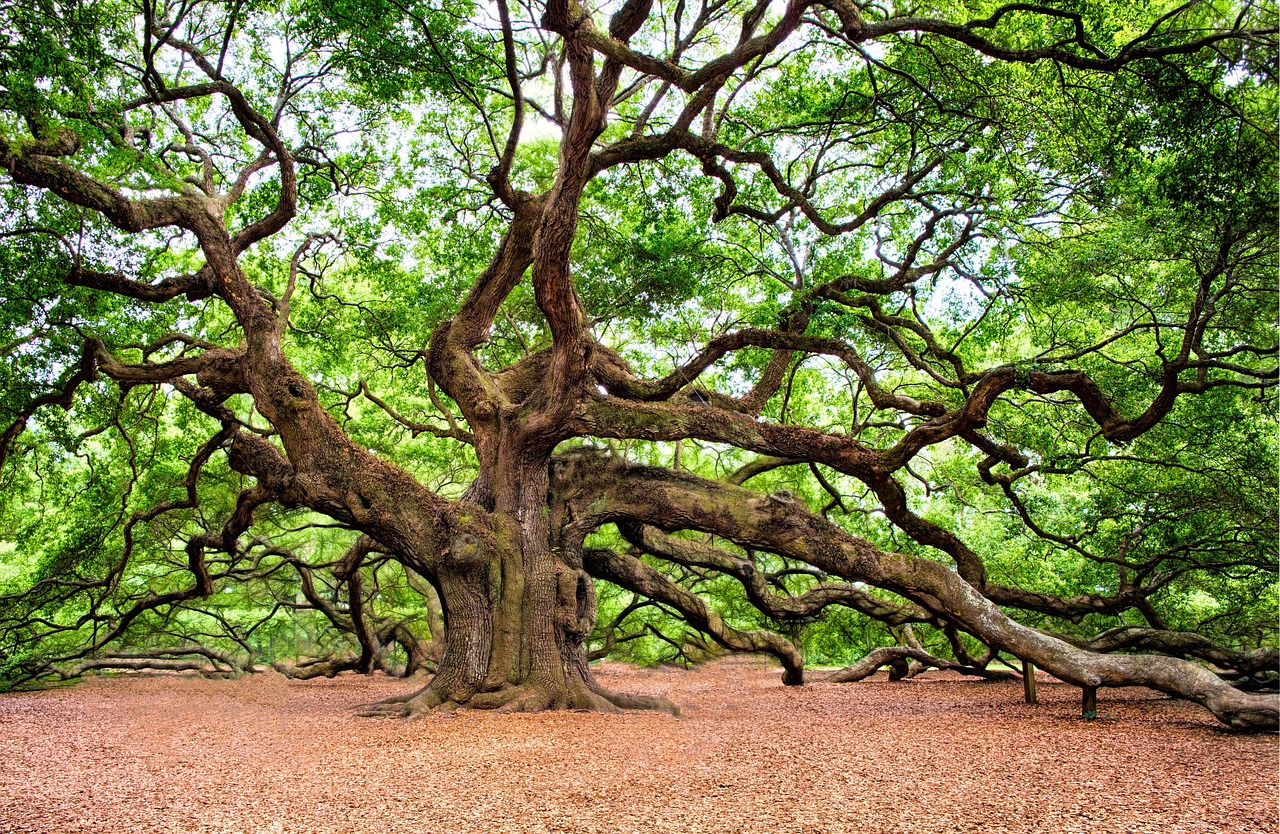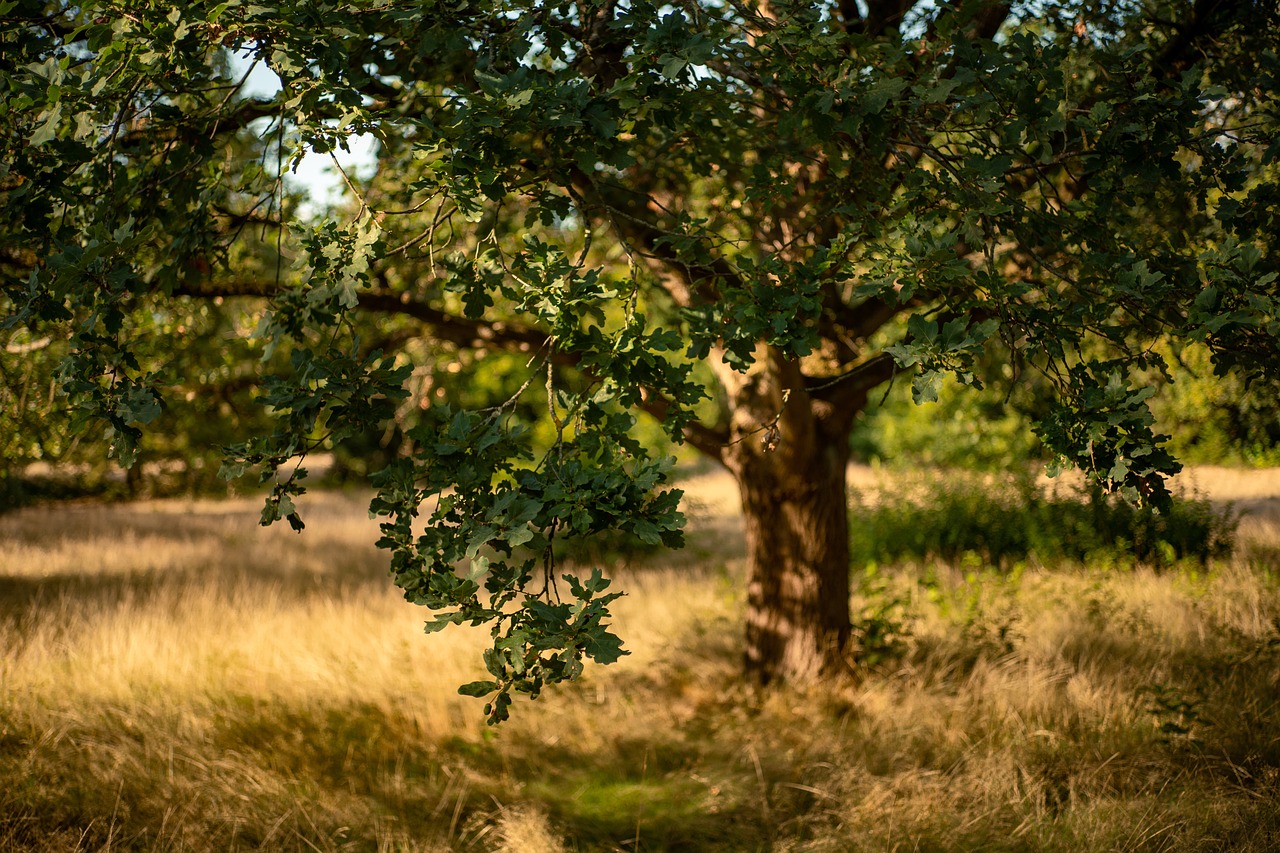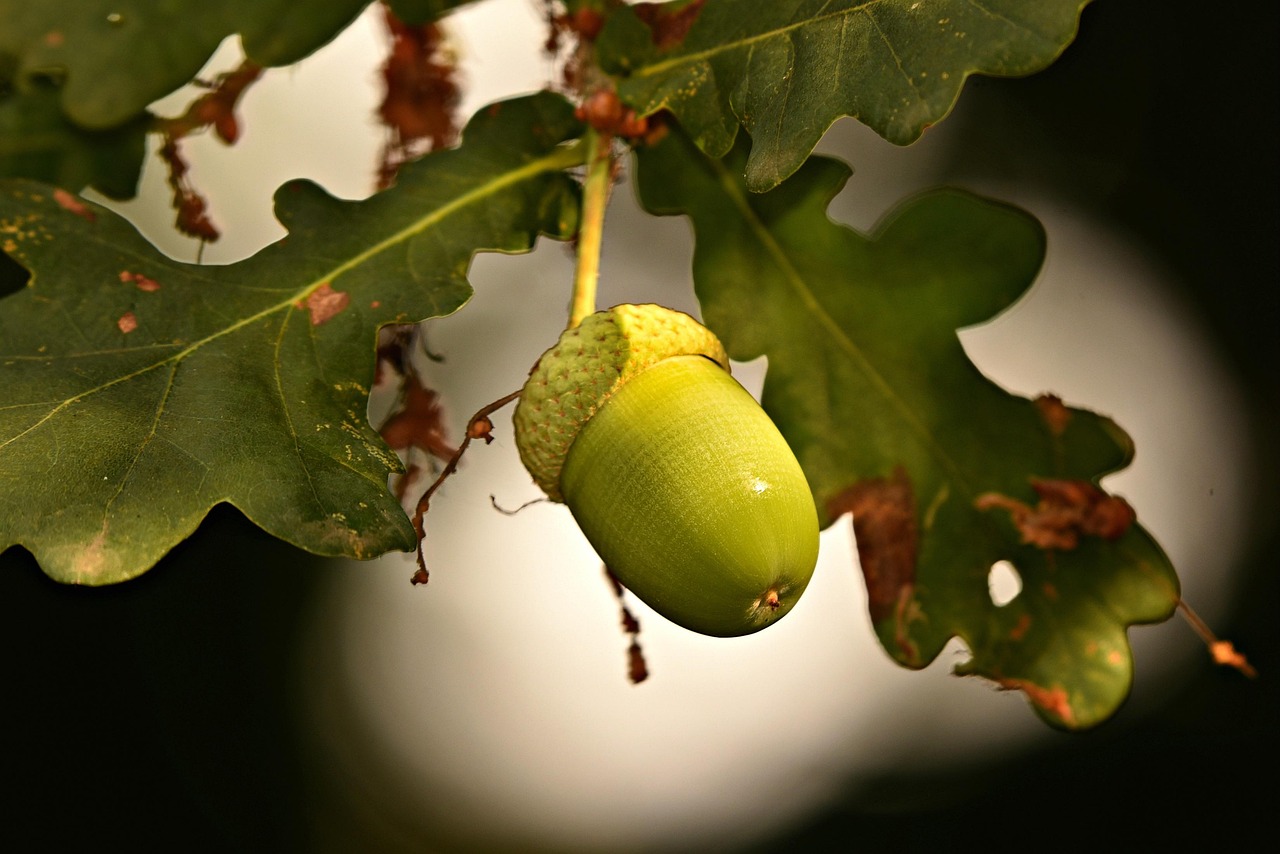Oak trees are majestic giants that grace our landscapes, providing beauty, shade, and homes for countless species. Their impressive stature and intricate bark patterns make them a fascinating subject for both nature enthusiasts and casual observers alike. Understanding oak trees is more than just admiring their grandeur; it is about recognizing their diversity and unique characteristics. This article delves into the secrets of oak trees, focusing on how to identify various types by their bark and leaves.
Oak trees belong to the genus Quercus, which encompasses around 600 species worldwide. They thrive in a range of climates, from temperate to tropical regions, contributing significantly to both ecosystems and human culture. Oaks are not just valued for their timber; they play a vital role in supporting wildlife, providing acorns as a food source for birds and mammals. This rich ecological contribution makes understanding oak species essential for conservation efforts.

When it comes to identifying oak trees, two key features stand out: bark and leaves. Each oak species exhibits distinct characteristics that can help you differentiate one from another. For instance, the texture, color, and pattern of the bark can tell you much about the tree’s identity. Similarly, the shape, size, and arrangement of the leaves provide additional clues.
Key Features of Oak Trees
To help you become adept at identifying oak trees, it is important to familiarize yourself with some essential characteristics. Below is a summary of notable features to look for:
| Feature | Description |
|---|---|
| Bark Texture | Varies from smooth to deeply furrowed depending on species. |
| Bark Color | Can range from grey, brown, to even reddish hues. |
| Leaf Shape | Includes lobed, rounded, or serrated edges based on species. |
| Acorn Size | Varies significantly; some are small while others are quite large. |
In addition to bark and leaves, understanding the habitat where the oak tree is found can also aid in identification. Oaks tend to grow in various environments, including woodlands, parks, and urban settings. Observing their surroundings might provide context that enhances your identification skills.
For those eager to learn more about oak trees, here are some common types to consider:
- Red Oak (Quercus rubra): Known for its pointed lobes and reddish-brown bark.
- White Oak (Quercus alba): Features rounded lobes and light grey bark that becomes scaly with age.
- Live Oak (Quercus virginiana): Recognized for its sprawling branches and evergreen leaves.
- Pin Oak (Quercus palustris): Characterized by its narrow leaves with deep sinuses and a pyramidal shape.
Identifying oak trees by their bark and leaves can be an enjoyable and rewarding experience. As you become more familiar with these features, you will appreciate the unique beauty of each oak species. In the following sections, we will explore specific identification techniques and delve deeper into the characteristics of various oak types.
Understanding Oak Bark Characteristics
The bark of an oak tree is not just a protective layer; it is also a key identifier. The texture and color of the bark can vary significantly among different oak species. Recognizing these variations can greatly enhance your ability to identify oaks in the wild.
Bark Texture
Oak bark can range from smooth to deeply furrowed. This diversity can be categorized into several types:
- Smooth Bark: Young oaks, such as the White Oak, often have smooth bark that gradually develops into a more rugged texture as they mature.
- Furrowed Bark: Species like the Red Oak feature pronounced furrows and ridges, giving them a distinctive appearance.
- Scaly Bark: The bark of older White Oaks becomes scaly, showcasing a layered texture that is quite unique.
These textures not only help in identification but also play a role in the tree’s health. For example, deeply furrowed bark can provide habitats for various insects and fungi.
Bark Color
The color of oak bark can provide additional clues to its identity. Here are some common colors associated with different oak species:
- Grey: Often seen in White Oaks, this color can appear lighter or darker depending on age and environmental factors.
- Brown: Many Red Oaks display a rich brown hue that deepens with age, contributing to their robust appearance.
- Reddish: Some species, like the Black Oak, have a dark reddish-brown bark that can be quite striking against the green foliage.
Leaf Identification Techniques

While bark offers valuable information, leaves are equally crucial for identifying oak species. The leaf shape, margin, and arrangement vary widely among different oaks.
Leaf Shape and Margin
The shape and margin of oak leaves can be categorized into several forms:
- Lobed Leaves: Common in species like the Red Oak, these leaves feature distinct lobes that can be pointed or rounded.
- Simple Leaves: White Oaks generally have broader leaves with fewer lobes, providing a smoother silhouette.
- Serrated Edges: Some oaks, such as the Pin Oak, exhibit serrated leaf edges that make them easily recognizable.
Leaf Arrangement
The arrangement of leaves on the stem can also aid in identification. Most oak leaves are arranged alternately along the branches, but some species may show variations:
- Alternate Arrangement: This is the most common arrangement found in oaks.
- Clustered Leaves: Certain young trees may have leaves clustered at the ends of branches, particularly when they are still growing rapidly.
In addition to shape and arrangement, examining the underside of oak leaves can reveal additional features such as hairiness or coloration that may help distinguish between species.
The Role of Acorns in Identification

Acorns are not just food for wildlife; they also play a significant role in identifying oak species. The size, shape, and appearance of acorns vary widely among different oaks.
- Size: Acorns from the White Oak tend to be larger and rounder compared to those from the Red Oak, which are typically smaller and more elongated.
- Cap Structure: The acorn cap can also vary. For instance, the acorn cap of the Bur Oak is large and fringed, while the Live Oak has a more rounded cap.
- Tannins: Some acorns are high in tannins, making them less palatable for animals, while others are sweet and more appealing.
By closely observing these features of acorns alongside bark and leaves, you can greatly enhance your identification skills when it comes to oak trees. Understanding these characteristics will make your exploration of oak forests more rewarding and informative.
Seasonal Changes in Oak Trees
As seasons change, so do the characteristics of oak trees, particularly their leaves and acorns. Understanding how these changes can affect identification can be incredibly useful for enthusiasts and professionals alike.

Spring Awakening
Spring is a time of renewal for oak trees. During this season, the buds begin to swell and leaves emerge. The new leaves are often vibrant and can vary in color from bright green to reddish hues, depending on the species. Observing the following aspects in spring can aid in identifying oak types:
- Leaf Color: New leaves may appear more colorful. For example, the leaves of the Red Oak can have a reddish tint when they first sprout.
- Bud Structure: The shape and size of leaf buds can differ among species. Some buds may be tight and pointed, while others can be rounder.
- Flowering: Oaks produce small flowers that can be overlooked but are essential for identification. Male flowers are typically long catkins, while female flowers are shorter and found on the same tree.
Summer Foliage
As summer progresses, the leaves mature and reach their full size. They also become more distinctive in shape and structure:
- Lobe Development: The lobes of Red Oak leaves become more pronounced, while White Oak leaves maintain a more rounded appearance.
- Leaf Texture: Leaves may develop a waxy or rough texture, which can help differentiate between species.
- Shade Tolerance: Some oak species thrive in shaded areas while others prefer full sunlight. Observing where you find them can provide clues to their identity.
Autumn Colors
Autumn is perhaps the most visually striking time for oak trees. As temperatures drop, leaves change color, offering a stunning display:
- Leaf Color Changes: Many oaks turn shades of yellow, orange, or red. For instance, the Scarlet Oak is known for its brilliant red foliage.
- Leaf Drop: Some species, such as the White Oak, may hold onto their leaves longer than others before dropping them.
- Acorn Maturity: Acorns ripen in autumn, making it easier to identify species by their acorns during this time.
Winter Identification
Even in winter, oak trees hold clues that can assist with identification. While leaves may be absent from many trees, other features remain visible:
- Bark Patterns: The bark remains a key identifier during winter months. The texture and color variations are still prominent.
- Branch Structure: Observing the branching pattern can provide hints; some oaks have a more rounded crown, while others may have a pyramidal shape.
- Buds: Identifying leaf and flower buds can be vital during winter. Different oak species possess distinctly shaped buds that can assist in identification.
The Importance of Location and Habitat
The habitat where oak trees grow can also provide important clues for identification. Different oak species have adapted to various environments, which may influence their physical characteristics.
Soil Type
The soil type affects the growth patterns of oak trees. Some species thrive in dry, sandy soils while others prefer moist, loamy conditions. Understanding soil preferences can help narrow down potential species:
- Sandy Soils: Species like the Blackjack Oak are commonly found in sandy soils.
- Clay Soils: The Willow Oak often prefers wet, clay-heavy soils.
- Loamy Soils: Many species, including the Bur Oak and Live Oak, thrive in fertile loamy soils.
Geographical Distribution
The geographical range of oak species varies significantly. Familiarizing yourself with where different oaks are commonly found can help with identification:
- Northern Regions: Red Oaks are prevalent in northern areas, adapting well to cooler climates.
- Southern Regions: Live Oaks are commonly found in the southern United States, often associated with coastal areas.
- Midwest: White Oaks are widespread across the Midwest and are often found in mixed hardwood forests.
This understanding of seasonal changes and habitat preferences will enhance your ability to identify oak trees effectively throughout the year and across different landscapes.
Utilizing Tools for Oak Identification
Identifying oak trees effectively can be made easier with the right tools. Whether you are a seasoned botanist or a casual nature admirer, having the appropriate resources can enhance your understanding and accuracy in identifying different oak species.
Field Guides
One of the most valuable tools for identifying oak trees is a dedicated field guide. These guides often include detailed descriptions, images, and geographical ranges of various oak species. When selecting a field guide, consider the following:
- Local Focus: Choose a guide that covers species native to your region. This will ensure that the information is relevant and applicable.
- Illustrations: Opt for guides that provide high-quality images to help visualize the key characteristics of each species.
- Identification Keys: Look for guides that include identification keys, which can lead you step-by-step through the identification process based on observable features.
Mobile Applications
In today’s digital age, mobile applications have become an excellent resource for plant identification. Several applications are designed specifically for tree and plant identification:
- PlantSnap: This app allows users to take pictures of leaves or trees and receive instant identification results.
- iNaturalist: A community-driven app where users can upload photos for identification by experts and fellow enthusiasts.
- LeafSnap: Focused on leaf identification, this app uses visual recognition software to help identify tree species based on leaf images.
Join Local Nature Groups
Engaging with local nature groups or clubs can be incredibly beneficial. These organizations often host guided walks, workshops, and informational sessions that enhance your learning experience. Benefits include:
- Expert Guidance: Learning from experienced naturalists can accelerate your ability to identify oak trees.
- Community Knowledge: Members often share insights and personal experiences that can deepen your understanding of local flora.
- Field Trips: Participating in organized trips provides hands-on experience in identifying oaks and other local species.
Final Thoughts
Understanding how to identify oak trees by their bark, leaves, and other characteristics is both an enriching and rewarding endeavor. With approximately 600 species of oaks around the world, the diversity is vast, making it essential to familiarize yourself with their unique traits. From observing seasonal changes to recognizing specific habitat preferences, every detail can contribute to accurate identification.
The tools available today—such as field guides, mobile applications, and community groups—can significantly enhance your learning process. Each resource offers unique benefits that can help you become a more proficient identifier of oak trees.
As you explore the beauty of oak trees in your environment, remember that each tree tells a story. By learning to identify them like a pro, you not only enrich your own knowledge but also contribute to the appreciation and conservation of these magnificent trees. Embrace the journey of discovery, and let your passion for nature guide you through the splendid world of oaks!
